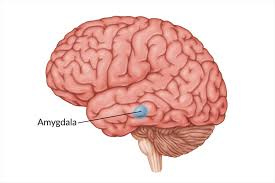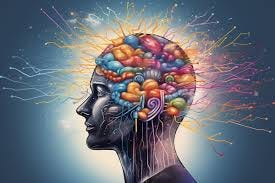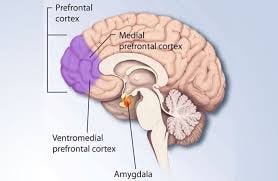The Neuroscience of "Inner Child Work” 🧠
How your younger self wired your brain, and why meeting them now rewrites your future (10min Read).
TL;DR Summary
Inner child work isn’t regression; it’s advanced neuroscience.
Childhood wiring lives on in your brain’s memory, identity, and attachment networks.
Those younger “parts” still drive adult behavior, from panic when someone doesn’t text back to overachieving at work.
Memory reconsolidation lets you revisit and rewrite those old templates with compassion and safety.
IFS (Internal Family Systems) provides the perfect bridge: Managers, Firefighters, and Exiles map directly onto brain networks, while the Self is your innate leadership system.
Doing this work literally reshapes your neural wiring, shifting you from survival to healing.
What Even Is “Inner Child Work"
When you hear the phrase “inner child work,” what do you picture?
Maybe someone in therapy hugging a stuffed bear.
Maybe your therapist is asking you to “talk to little you” and you immediately think: Wait, I’m paying how much to pretend I’m seven again?
That’s the stereotype.
And honestly, I get why people roll their eyes.
It can sound like regression. It can look like regression. But here’s the surprising truth:
Inner child work actually has a ton of neuroscience behind it.
When you revisit those younger parts of yourself, you’re engaging memory reconsolidation, reprogramming identity networks, and repairing attachment circuits that were built decades ago.
You’re not “going back” to childhood. You’re rewriting the wiring that childhood left behind.
Let me show you what I mean.
How Your Inner Child Actually Forms
Picture yourself as a newborn. No words yet, no sense of “I”, just sensations.
You cry. Sometimes someone comes. Sometimes they don’t.
Your brain is already busy running experiments: Am I safe here? Will anyone come for me?
At first, it’s all body-level coding. Your amygdala, that little almond-shaped threat detector, tags experiences: “Warm chest = safety.” “Cold absence = danger.”
A few years later, your hippocampus kicks in, the brain’s scrapbook-maker.
Now you’re not just feeling things, you’re remembering.
Mom smiles when you bring her a flower. Dad gets quiet when you cry.
Over time, those memories turn into rules your nervous system lives by: If I perform, I get love. If I need too much, I get ignored.
By the time you’re in grade school, something even more powerful is happening.
Your default mode network, the brain’s self-story system, starts weaving all those scraps into a coherent identity.
That’s when it shifts from “sometimes I feel ignored” into “I am too much.”
From “sometimes I feel celebrated” to “I am lovable when I achieve.”
That’s the inner child forming, not as a mystical ghost, but as a living network of neurons that fuses memory, identity, and emotion.
And here’s the wild part: those early templates don’t fade when you grow up.
They become you.
How Childhood Wiring Sneaks Into Adult Life
Fast-forward. You’re 32. You’ve got a career, a 401k, maybe even a favorite brand of oat milk.
On the outside, you’re all grown up.
But then your partner doesn’t text back for a few hours, and suddenly your chest is tight. Your stomach drops.
Your brain starts spinning a story: They don’t care. They’re leaving. I knew it.
Where did that come from? Not the rational adult cortex that pays the bills.
That panic is straight from your amygdala-hippocampus partnership, the one that learned decades ago that silence = abandonment.
Or maybe you stay late at the office night after night, exhausted but unable to stop.
On paper, you tell yourself it’s ambition.
Underneath, it’s the six-year-old network whispering: If I achieve, I matter. If I slow down, I disappear.
Harville Hendrix, in Getting the Love You Want, calls this the “Imago,” the way your inner child picks partners and patterns that mirror old wounds.
It’s why you might feel inexplicably drawn to someone inconsistent or emotionally unavailable.
Your predictive brain is thinking: Maybe if I win them over, this time the story ends differently.
Except it usually doesn’t. The same fight repeats.
The same wound replays.
That is, until you learn how to step into the system and rewire it.
What Happens in the Brain During Inner Child Work
Here’s where it gets wild.
Neuroscience research shows us that every time you recall a memory, it’s not a fixed file you’re opening, it’s editable.
That’s called memory reconsolidation.
Think of it like pulling up an old Word doc.
While it’s open, you can change it. Add compassion, context, safety.
And when you “save” it again, the old version doesn’t come back. The new one gets stored instead.
That’s what happens when you sit with a painful childhood moment and imagine your adult self walking in.
Or when your partner responds with empathy where once there was silence.
The younger network fires, the fear, the shame, the loneliness, and at the same time, new neural input arrives: comfort, validation, presence.
The mismatch starts to rewrite the code.
Over time, these updates don’t just change memories.
They shift identity itself.
The default mode network, the regions that hum along in the background, constantly reinforcing who you are, starts encoding a new narrative.
One where you’re not just a scared kid reaching out into the void.
One where you’re someone safe, lovable, worthy.
That’s why people describe inner child work as life-changing.
Because it’s not just thinking differently.
It’s becoming different, at the level of your neural wiring.
Why IFS Is the Perfect Bridge
Up until now, we’ve been calling it the inner child.
But here’s the thing: you don’t just have one.
Shocking, I know.
But if you’ve ever noticed how different sides of you take over at different times, you know it’s more complicated than that.
Some parts of you are perfectionistic and controlling.
Others are impulsive and reckless.
And yes, some are tender and young, carrying the deepest hurts.
IFS calls these Managers, Firefighters, and Exiles.
And here’s the beautiful thing: those “parts” aren’t just metaphors.
They map directly onto brain systems we know from neuroscience.
Managers are like the prefrontal cortex on overdrive. They’re the planners, organizers, overachievers. They use cognitive control to keep painful memories and feelings buried. Psychologically, they sound like: “If I just keep it together, no one will know.” Neurologically, they recruit top-down executive networks to suppress limbic activation.
Firefighters are more limbic, fast, and reactive. Think amygdala + striatum circuits: fight, flight, freeze, fawn, numb, distract. They’re the “slam the door, pour a drink, scroll until 2 a.m.” parts. Their job is to drown out pain as quickly as possible.
Exiles are the raw, vulnerable parts. These are inner children frozen in time, still carrying the pain of shame, fear, or loneliness. They’re stored in implicit emotional memory (amygdala, hippocampus, insula). When Exiles surface, they flood the system, which is exactly why Managers and Firefighters work so hard to keep them hidden.
IFS is brilliant because it gives us a language and labels that translate directly into neural mechanisms: amygdala, hippocampus, prefrontal cortex, vagus nerve, and default mode network.
Psychology and neuroscience finally meet.
I hope you can see how IFS offers the perfect psychological framework for the neuroscience of how different brain networks form, defend, and protect us.
But there’s one more piece we haven’t talked about yet: the Self.
The Self: Your Built-In Inner Parent
In IFS, there’s one “part” that isn’t really a part at all, it’s called the Self.
Think of the Self as your inner leader, the wise parent you always needed, the calm center that can meet every other part without fear.
Unlike your Managers, Firefighters, or Exiles, the Self doesn’t carry burdens or defenses.
It just is.
Here’s what surprises most people: you don’t have to create your Self.
You were born with it.
IFS describes the Self with the “8 C’s” (calm, clarity, compassion, curiosity, connectedness, confidence, courage, creativity) and the “5 P’s” (presence, patience, persistence, perspective, playfulness).
And when you think about it, babies come into the world with all of those qualities baked in.
Neuroscience even backs this up.
Babies come into the world with brains wired for presence and connection.
The right hemisphere is tuned for attunement.
Babies’ vagal-social engagement systems are primed for connection.
Their nervous systems are primed to co-regulate.
They’re curious. Present. Playful.
They connect instantly through eye contact, cooing, and imitation.
They trust. They’re creative in how they explore the world.
In other words: the Self is your default operating system.
Before trauma, before conditioning, before parts had to take on extreme jobs, you were Self-led.
Over time, when life gets painful, Managers and Firefighters take over to protect Exiles.
Self doesn’t disappear, but it gets covered.
It’s like the wise parent went quiet while the kids ran the household.
Self never leaves, though; it’s always in there, waiting to step forward as the leader.
And neuroscience supports this. The medial prefrontal cortex and anterior cingulate, areas tied to empathy, perspective-taking, and regulation, can reengage even after decades of dysregulation.
In fact, compassion practices literally thicken these regions in the brain.
So when we talk about “Self” as the wise inner parent, it’s not wishful thinking.
It’s your brain’s natural “leadership network”, built in from birth, reclaiming its role.
Okay, Cody, this is all very cool, but what does this inner child work actually look like?
Great question as always, imaginary reader.
Let’s talk about it.
Walking Through the IFS Process (and What’s Happening in Your Brain)
To answer this question, we’re going to walk through the 6 core steps of the IFS model.
IFS calls these steps the 6F’s: Find, Focus, Flesh Out, Feel Toward, BeFriend, and Fears.
Here’s what happens, both psychologically and neurologically, when you do IFS inner child work:
Find & Focus: You notice a triggered part (shame, panic, rage). A limbic circuit lights up. Instead of pushing it down, you focus on it. This shifts activity from amygdala reactivity toward medial prefrontal awareness.
Flesh Out & Feel Toward: You get curious: “How old does this feel? What’s its job?” “How do I feel towards this part of me?” You start to feel compassion rather than fear. The hippocampus pulls up childhood associations, while the vagus-social engagement system gives your nervous system a sense of safety, even inside yourself.
Befriend & Fear Check: You let the part know you want to understand it. You wanna know what it’s afraid would happen if it didn’t do its job. The prefrontal cortex calms the amygdala. Managers and Firefighters soften as they see the Self stepping in. Psychologically, this is the child realizing: “I’m not alone anymore.”
The more of your managers and firefighters you do this process with, the more they will trust you.
And the more the trust and Self energy you bring to your system, the more likely an exile is to step forward.
IFS is so powerful because it has a process for healing and releasing these old wounds, instead of just talking about them like other therapies.
Exile Release: Rewiring the Old Memory
When the Exile finally steps forward, the raw inner child holding shame, terror, or grief, you don’t regress or re-experience.
You witness.
You stay in your Self and meet them.
And here’s the magic moment: the Exile reactivates the old memory trace (hippocampus + amygdala), but at the same time, you bring in new neural input: compassion, presence, calm physiology.
What IFS calls “Self Energy.”
This mismatch is exactly what memory reconsolidation requires.
The old network destabilizes, and a new one: “I am safe now, I am not alone,” gets written into the circuitry.
In IFS language, the Exile is “unburdened.”
In neuroscience, the synaptic wiring literally changes.
The mind, brain, and body start to remember differently.
Bottom line: IFS isn’t just a metaphor for “inner child work.”
It’s a precise, step-by-step way to do advanced neural editing.
Each Manager, Firefighter, and Exile is a child-part of you, and when your Self learns to meet them, you’re not regressing.
You’re repairing.
A Tool You Can Try Right Now
Let’s make this practical.
Think of a time recently when you felt way more upset than the situation seemed to warrant.
Maybe your boss gave you neutral feedback and you felt crushed.
Maybe your friend canceled plans, and you spiraled into shame.
Close your eyes.
Drop into that feeling. Now ask yourself: How old does this part of me feel?
Five? Ten? Fourteen? Usually, an age pops up.
That’s not random.
That’s your nervous system pointing to the original template.
Now, instead of shoving it away, try this: imagine your adult Self sitting beside that child.
Not becoming them, being with them.
Ask gently: What do you need me to know?
Sometimes the answer is heartbreakingly simple.
“I’m scared.” “I feel alone.” “I just want someone to see me.”
Here’s where the neuroscience comes in: when you respond with compassion, even in imagination, you’re feeding new data into the old network.
You’re rewriting the prediction.
The nervous system that once believed “I’m alone” begins to encode “I’m not alone anymore.”
That’s neuroplasticity in action, baby!
Meeting Your Inner Child
Inner child work isn’t about acting like a kid.
It’s about engaging the brain’s deepest, most powerful systems for change.
You’re not playing pretend.
You’re updating memory files, reshaping identity networks, repairing attachment circuits.
The child inside you isn’t holding you back.
They’re waiting for you to show up as the safe, compassionate, grown version of you they always needed.
And when you do?
That’s not regression.
It’s transformation.
Until next time… Live Heroically 🧠
Want to Work With Me? Here Are a Few Ways I Can Help You
Check out my FREE webinar on The ONE Skill That Attracts Secure Love Fast. If you’re smart, attractive, successful, and self-aware, but love still feels like a minefield, this is for you!
Grab my new ebook: Exactly How to Become Emotionally Available: It’s a step-by-step guide for attracting and keeping the love you seek, built for the success but single among us!
Join the Action Academy: It’s where I hang out when I’m not writing. You can hop on weekly calls I host, see the projects I’m working on, and of course, take action on healing the invisible baggage that secretly holds you back from the relationships, health, and success you want!
Become a paid subscriber to the Mind, Brain, Body Lab Digest: You’ll get subscriber-only video posts, email replies, access to my entire blog archive, early access to new products, workshops & tools I create!
Supporting Research
Ecker, B., Ticic, R., & Hulley, L. (2012). Unlocking the emotional brain: Eliminating symptoms at their roots using memory reconsolidation. Routledge.
Hendrix, H. (2007). Getting the love you want: A guide for couples. St. Martin’s Griffin.
Schore, A. N. (2019). Right brain psychotherapy. W. W. Norton & Company.
Siegel, D. J. (2012). The developing mind: How relationships and the brain interact to shape who we are (2nd ed.). Guilford Press.
Porges, S. W. (2011). The polyvagal theory: Neurophysiological foundations of emotions, attachment, communication, and self-regulation. W. W. Norton & Company.
van der Kolk, B. A. (2014). The body keeps the score: Brain, mind, and body in the healing of trauma. Viking.
Schwartz, R. C. (2021). No bad parts: Healing trauma and restoring wholeness with the Internal Family Systems model. Sounds True.

















Beautiful, thank you for sharing this great piece, Cody!